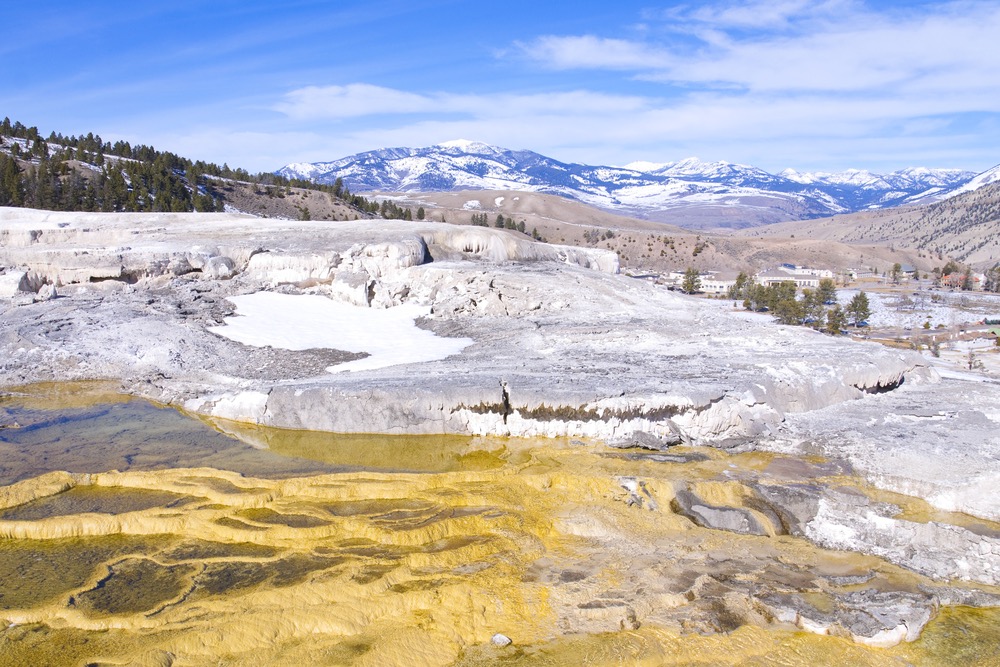
Editor's Note: This article was updated at 3:30 p.m. E.T. on Friday, June 16
A man was severely burned when he fell into a hot spring earlier this week in Yellowstone National Park, the National Park Service reported.
The man, 21-year-old Gervais Dylan Gatete, fell into the Lower Geyser Basin just north of Old Faithful on Tuesday (June 13), sometime before midnight. Gatete was an employee of Xanterra Parks and Resorts, a company that provides food services and hospitality in the park, and he was with a group of seven other people. The details surrounding the accident are still murky.
"Yellowstone's thermal features are dangerous," superintendent Dan Wenk said in a statement. "We continually stress that people must stay on trails and boardwalks in geyser basins, not only to protect resources, but for their own safety." [Yellowstone National Park: The Early Years (Photos)]
The group managed to alert a park ranger, who treated the man at the site and then had him transported to the airport at West Yellowstone, where he was flown to a hospital.
Hot, hot, hot springs
Yellowstone National Park's amazing geothermal features are fed by the massive supervolcano beneath it. With 10,000 geysers, Yellowstone boasts half of the known geysers in the world. Every year, about 3 million people visit the park to see the otherworldly, bubbling cauldrons of superheated pools matted with yellow, green and red bacteria, according to the National Park Service.
But though Yellowstone's hot springs are among the park's most intriguing draws, they are also some of the deadliest. Since the park's opening, at least 22 people have died after slipping or voluntarily entering the deadly pools, Outside magazine reported. The boardwalks are put in place for a reason; deceptively solid ground off the boardwalks could give way at any moment, leading people to fall into the steaming pots of acidic water, according to the National Park Service.
Get the world’s most fascinating discoveries delivered straight to your inbox.
The pressure and composition of the water underground mean the hot springs in the park are roiling with superheated water, and routinely exceed the boiling point at that elevation, which is 199 degrees Fahrenheit (92 degrees Celsius), according to Yellowstonepark.com. The hottest temperature, recorded in Norris Geyser basin, was taken in an approximately 1,000-foot-deep (300 m) drill hole and was a scalding 459 degrees F (237 degrees C).
If the heat doesn't scare people, the acidic composition of the water should. In June 2016, a man died in Norris Geyser basin after trying to "hot pot," or soak in the water, according to an NPS report. The man's body was completely dissolved by the acidic water before rescue workers could retrieve it.
Originally published on Live Science.
Editor's Note: This article was corrected to remove reference to the oldest and tallest geysers and to note that the hottest geyser is located in Norris Geyser basin, and is not called Norris Geyser. The article was also amended to clarify that the borehole depth originally reported was an approximate depth.

Tia is the editor-in-chief (premium) and was formerly managing editor and senior writer for Live Science. Her work has appeared in Scientific American, Wired.com, Science News and other outlets. She holds a master's degree in bioengineering from the University of Washington, a graduate certificate in science writing from UC Santa Cruz and a bachelor's degree in mechanical engineering from the University of Texas at Austin. Tia was part of a team at the Milwaukee Journal Sentinel that published the Empty Cradles series on preterm births, which won multiple awards, including the 2012 Casey Medal for Meritorious Journalism.


